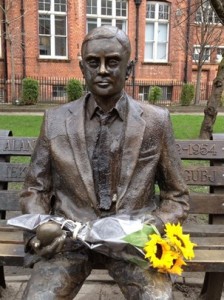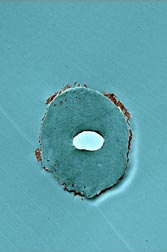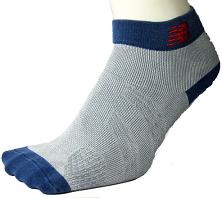Vancouver seems to be experiencing a renaissance poetrywise. The city is about to enjoy its 2nd International Poetry Festival just on the heels of V125PC, a poetry conference, held in Oct. 2011 to celebrate the city’s 125th anniversary (mentioned in my Oct. 20, 2011 posting).
I’m not sure how I missed Vancouver’s 1st annual International Poetry Festival but here are some details about this year’s which runs from April 23 – 28, 2012 (from the Dec.16, 2011 news release on the Vancouver Poetry Festival website),
Monday, April 23rd
Early Festival Registration
The Rio Theatre (1660 East Broadway Ave), 5-6pm
This is an opportunity for poets taking part in the Canadian Individual Poetry Slam Competition to get registered, receive their passes and meet other poets taking part in the competition.
Ian Keteku features at the 16th annual Van Slam Finals Night
The Rio Theatre (1660 East Broadway Ave), 7pm doors open, 8pm show starts
$12 in advance at the Van Slam or online, $15 at the door (group rates available for schools)
Over 80 poets have been competing throughout the year to qualify for this playoff event. The top eight vie for a spot on this year’s poetry slam team, which will be representing Vancouver at major tournaments and festivals across North America. As our featured performer for the evening, The Vancouver International Poetry Festival is proud to have 2010 World Slam Champ Ian Keteku from Ottawa perform.
Tuesday, April 24th
Late Festival Registration
Café Deux Soleils (2096 Commercial Dr), 5pm – 6pm
This is the last chance participants in the Canadian Individual Slam Championship have to register for the tournament. Any poet that is due to take part in the tournament but does not register in person will have their slot given to the next available competitor.
Mashed Poetics
Cafe Deux Soleils (2096 Commercial Drive), 7:30pm doors open, 8pm show starts, $10
Mashed Poetics brings together spoken word and classic rock for a rip-roaring evening of electric verse. Musical and poetic collaboration create an evening filled with new work and unexpected surprises. This year, poets will be working off of songs from the Beastie Boys album, Licence to Ill.
Wednesday, April 25th
Late Festival Registration
Café Deux Soleils (2096 Commercial Dr), 5pm – 6pm
This is the last chance participants in the Canadian Individual Slam Championship have to register for the tournament. Any poet that is due to take part in the tournament but does not register in person will have their slot given to the next available competitor.
Indies Poet Orientation
Café Deux Soleils (2096 Commercial Dr), 6–7pm
This is for all participants in the Canadian Individual Slam Championship to learn about the format of the tournament, and have all their questions answered.
Canadian Individual Slam Championship Last Chance Slam
Café Deux Soleils (2096 Commercial Dr), 7:30pm doors open, 8pm show starts, $10
Didn’t get chance to register in time? Want to pit your work against some of the strongest spoken word artists from across Canada? This is your last opportunity to get into the tournament. 12 spots are available in this slam. The top five highest-scoring poets in the first round move on to the second round. The highest-scoring poet in the second round is entered into the Canadian Individual Slam Championship.
Poets’ Delight
Eternal Abundance (1025 Commercial Dr), 10:30pm doors open, 11pm show starts, $5
Poets’ Delight: A revelry of open mic innovation and awesomeness!!
This is not a competition, but a showcase of performance poetry innovation. On Wednesday morning, all poets who have signed up will be given a prompt (the same prompt for everyone) and will have the day to write an original performance poetry piece to share.
Members of the audience will be asked to write love notes to the individual poets commenting on their original words and the poets will be able to take this feedback away with them as a souvenir of the evening. Those who have written love notes can either drop them into a box bearing the poet’s name or give them to the hosts to read out between other poets.
The night will also feature the music and poetry of Chelsea D.E. Johnson and Jillian Christmas and the poetic rumbling of Scruff Mouth and there will be a DJ playing music for us after the show and during the breaks.
Come ready to be dazzled and, well, delighted!
Thursday, April 26th
Writing and performance workshop with Daemond Arrindell
East Side Yoga (1707 Grant Street) 1:30pm till 3:30pm, $20
Performance poetry is such a unique art form. It’s not just poetry, but solid writing is vital. It’s not music, but it has a musicality to it. It’s not theater, but movement and voice play a large role. There are rules and things you should never do and times to ignore both of those things. At it’s best, it is a powerful and poetic story written in a way that only you could write and brought to life onstage in a way that only you can tell.
In this workshop, Daemond Arrindell, 8-time coach of the Seattle National Slam Team, will work with you to get past the weaknesses and help find and hone the strengths in both the writing and your performance to truly bring your poem to life. The focus will be on how to best tell the story your poem wants to tell. The workshop will begin with writing and poets should bring current poems they are wanting to workshop.
Writing and performance workshop with Barbara Adler
East Side Yoga (1707 Grant Street) 3:30pm till 5:30pm, $20
Fear and (self) Loathing: Getting Over Performance (Poetry) Anxiety
Have you ever finished a performance and immediately wanted to fall into an abyss? Does the thought of sucking, like, really sucking, keep you from doing things you might love?
At the tender age of 18, Barbara Adler started competing at the Vancouver Poetry Slam. She was generally a big, dark pile of self-loathing and nerves. Over the course of a decade of performances all over the world, she’s figured out many ways to outwit her genetic predisposition to neurotic insecurity\destructive perfectionism. Join her for a workshop, where she’ll share some of her ideas on how to get over the performance fears that keep you from pushing ahead. Bring a pen and some paper, and an idea for a performance that scares you.
Canadian Individual Poetry Slam Championship: Preliminary Bouts #1 & #3
Café Deux Soleils (2096 Commercial Dr), 6:30pm doors open, 7pm first bout, 9pm second bout, $10
These bouts will feature poets from across the country competing with 4-minute and 1-minute poems in a quest to take home the Canadian Individual Poetry Slam Championship.
Canadian Individual Poetry Slam Championship: Preliminary Bouts #2 & #4
Eternal Abundance (1025 Commercial Dr), 6:30pm doors open, 7pm first bout, 9pm second bout, $10
These bouts will feature poets from across the country competing with 4-minute and 1-minute poems in a quest to take home the Canadian Individual Poetry Slam Championship.
2nd annual VIP Nerd Night
Café Deux Soleils (2096 Commercial Dr), 10:30pm doors open, 11pm show starts, $10
Come on down to the Vancouver Nerd Poetry Slam! Watch browncoats, ensigns, mathletes, comic collectors, elves, power rings, geeks and jedis all get into a Tardis and go 88 miles per hour for your viewing pleasure. Our finest nerd brothers and sisters will face off in an epic slam to proclaim a winner because in the end, ‘there can be only one’. Come on down and spit your best nerd rhymes.
Come out to this late night event where we celebrate all things nerd-like. There will be prizes and costumes will be encouraged and will be featuring a performance by The Klute and hosted by our very own cosmonaut of cartoons, knight of the comic book kingdom, Duncan Shields.
Friday, April 27th
Chapbook making workshop with Warren Dean Fulton
East Side Yoga (1707 Grant Street) 1:30pm till 3:30pm, free for all poets and poetry fans
Are you looking at taking your poetry to the next level? Are you looking at producing your first chapbook or simply wanting to see a myriad of different style of chapbooks, then come to this workshop. Warren Dean Fulton has produced hundreds of chapbooks and has seen thousands more. Come pick his brain and learn from the chapbook guru himself.
Banter workshop with Brendan McLeod
East Side Yoga (1707 Grant Street) 3:30pm till 5:30pm, $20
Whenever you’re showcasing a group of poems for an audience, you always have to figure out how best to contextualize them. This workshop tackles what to do between poems onstage. What subjects should you talk about? What kind of stories/snippets/haikus/jokes should you tell? How do you change your performative style to accommodate these? The difference between a good set and a killer set is often how a poet relates to the audience. In this workshop, we’ll talk about how to do this in a way that is effective and true to your personality.
Canadian Individual Poetry Slam Championship: Preliminary Bouts #5 & #7
Café Deux Soleils (2096 Commercial Dr), 7pm doors open, 7:30pm first bout, 9pm second bout, $10
These bouts will feature poets from across the country competing with 2-minute and 3-minute poems in a quest to take home the Canadian Individual Poetry Slam Championship.
Canadian Individual Poetry Slam Championship: Preliminary Bouts #6 & #8
Eternal Abundance (1025 Commercial Dr), 7pm doors open, 7:30pm first bout, 9pm second bout, $10
These bouts will feature poets from across the country competing with 2-minute and 3-minute poems in a quest to take home the Canadian Individual Poetry Slam Championship.
Late Night Erotica Poetry Mic hosted by Jessica Mason Paull and Erich Haygen
Café Deux Soleils (2096 Commercial Dr), 10:30pm doors open, 11pm show starts, $5
Erotic Poetry shows are often celebratory and light-hearted, but they can also carry commentary regarding serious matters of sexual health such as personal boundaries, sexual identity, and sex trade and violence.
Even if you’re not competing in the slam, every true poet knows that the real measure of success is winning the affections of a crowd of beautiful strangers. Put on that scandalous outfit you’ve been waiting for an excuse to flaunt and bring your sestina about fisting to The Late Night Erotica Open Mic! Hosts Jessica Mason-Paull and Erich Haygun will be awarding prizes, shaming thinly-veiled sexism and encouraging strangers to make out all night long.d of beautiful strangers.
Saturday, April 28th
The Annual Haiku Death Match hosted by Jessica Mason Paull
Eternal Abundance (1025 Commercial Dr), 3:30 pm doors open, 4:00pm show starts, $5
Can you write a note in seventeen syllables? Then come to this show. The show will feature 16 haikusters doing battle with the winners getting amazing prizes. If you’re interested in reading please speak to incoming Van Slammistress, Jessica Mason Paull on the day of. And this is an audience participation event, so bring your outside voices to this inside event.
Canadian Individual Poetry Slam Finals
The Rio Theatre (1660 East Broadway Ave), 7pm doors open, 8pm show starts
Advance tickets $12, At the door $15
The finals of the Canadian Indies Slam Championship will be a three-round poetry slam. The ten best poets from the preliminary bouts will square off, and at the end of the night, one of them will walk away with the title of Canadian Poetry Slam Champion and $1000.
There’s still more but this is getting too long. In any event, you should be able to find lots of poetry in Vancouver for the foreseeable future.



